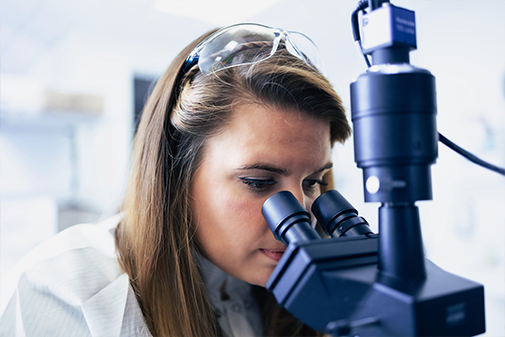In Vitro Biocompatibility Assays

Biocompatibility testing is a vital part of ensuring the safety of medical devices. These assays are also required as part of the regulatory submission process for cosmetics and drugs in the United States, Canada, and the European Union. Biocompatibility tests measure cytotoxicity, sensitization, and irritation.
LifeNet Health LifeSciences can support these efforts with full in vitro replacement assays for biological endpoints in keeping with ISO 10993 and OECD Testing Guidelines. This can help reduce reliance on traditional animal testing.
We offer flexible, customized approaches to help solve challenges. Our team has 60-plus years of combined experience with in vitro testing.
Our facilities are compliant with Good Laboratory Practices and Good In Vitro Method Practices (OECD 286).
Connect with an expert
The Value of In Vitro Options
Many testing standards and guidelines back the use of in vitro options to determine biocompatibility. Dermal corrosion, dermal irritation (OECD TG 439), and dermal sensitization can all be evaluated with in vitro test systems. We also use human 3D epidermal models – validated for use by ECVAM – to measure irritation.
Direct protein reactivity assay (DPRA OECD TG 442C), keratinosens (OECD TG 442D), and hCLAT (OECD TG 442E) are used alone or in combination to provide a mechanistic model for determining whether a chemical is a sensitizer or a non-sensitizer, in line with UN GSH.
Ocular cytotoxicity of medical device extracts, cosmetic products, or drugs can also be evaluated with in vitro models, according to OECD TG 491. General cytotoxicity can also be evaluated using L929 cells.
Tests We Offer
- Cytotoxicity with L929 cells (ISO 10993-5)
- Dermal corrosion (OECD TG 431)
- Dermal irritation (OECD TG 439)
- Dermal sensitization (OECD TG 442C, 442D, 442E)
- Dermal permeability/penetration (OECD TG 428)
- Ocular Toxicity (OECD TG 491)
Expert Regulatory Guidance
- FDA
- EPA
- Health Canada
- European Food Safety Association
- European Medicines Agency
Our Process Sets Us Apart From Other Laboratories
Consultation – We partner with you to determine the best approach, offering customized study plans that draw from our 60-plus years of combined in vitro testing experience. We may recommend utilizing more than one assay when performing a thorough cytotoxicity screening.
Assay Development – We develop and validate your customized assay using many different cell models, with an emphasis on all-human primary cells and biospecimens to simulate in vitro conditions, which provides more relevant, reliable results than traditional testing methods. This is part of our commitment to advancing alternative methods to support organizations in moving away from traditional animal-based models.
Data Analysis – We provide expert data analysis, including offering adaptable options when needed based on early results.
Results Review – Our clear, concise reports bring simplicity to your biggest data challenges, putting your organization in the best position for regulatory reviews. We may suggest follow-up studies to further your organization’s research goals.
We offer extensive testing capabilities. Our facilities are Good Laboratory Practice-compliant.
